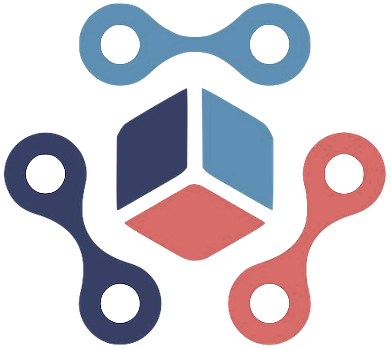In recent years, the AI industry has been captivated by stories of breakthroughs that promise to revolutionize technology while simultaneously reducing costs. The narrative often revolves around small companies outpacing giants, leveraging techniques like knowledge distillation to create powerful models with minimal resources. A recent case involving a Chinese startup, DeepSeek, captivated headlines by touting their R1 chatbot as a marvel rivaling industry giants, achieved through complex methods on a fraction of the computational budget. This stirred anxiety and even panic among Western tech players, with stock markets reacting sharply.
However, beneath the sensationalism lies an important lesson: the underlying technique—distillation—is far from a revolutionary discovery. Instead, it represents a mature, well-understood tool in the AI arsenal, dating back over a decade. The media’s focus on the supposed novelty of DeepSeek’s approach often oversimplifies the narrative, ignoring the long-standing history and practical applications of knowledge distillation. It’s essential to recognize that such methods have been extensively studied, refined, and integrated into major AI workflows for years. Claims of radical breakthroughs that dramatically change the landscape tend to overshoot the reality, which is about gradual, cumulative improvement rooted in established science.
The Power of Knowledge Distillation: More Than Just Compression
At its core, knowledge distillation offers a sophisticated way for smaller models—referred to as “student” models—to learn from larger, “teacher” models. The technique involves transferring the nuanced, often hidden, information held within vast neural networks into more streamlined architectures. This process is far from trivial; it resembles extracting wisdom from a seasoned teacher and embedding it into a pupil, ensuring that the latter maintains high performance without the burden of extensive processing.
What makes distillation particularly compelling is its ability to encode “dark knowledge”—the subtle cues and probabilistic insights a large model possesses about classification tasks. Instead of simply giving the correct label, the teacher provides a distribution over possible answers, revealing how similar or dissimilar different categories are in the model’s internal representation. This subtlety allows smaller models to develop a richer understanding of complex data distributions, ultimately producing streamlined models that perform remarkably close to their larger counterparts.
Yet, despite its widespread adoption and proven effectiveness, many narratives overlook how foundational and unglamorous this tool truly is. It’s an elegant solution—a bridge that enables innovation in model efficiency—yet its development is rooted in decades of research that, initially, was met with skepticism, rejection, and slow adoption. The myth of it being a recent revelation obscures the reality: distillation is an established, reliable technique that’s been honed over years, not a sudden, groundbreaking discovery.
Distillation’s Role in Shaping the AI Landscape
The widespread reliance on distillation cannot be underestimated. Its practical utility has been demonstrated repeatedly; models like Google’s BERT and its distilled variant, DistilBERT, are classic illustrations. These models exemplify how distillation can significantly slash training and inference costs while preserving near-identical accuracy. They serve as tools that democratize AI, making powerful models accessible to smaller entities that lack immense computational resources.
Moreover, practitioners increasingly explore novel applications of distillation. For instance, Berkeley’s recent research harnessed the method to improve multi-step reasoning models, enabling them to solve complex problems more efficiently. The open-source Sky-T1 model trained at Berkeley underscores that the technique is not just about size reduction but also about enhancing reasoning capabilities without astronomical expenses.
However, there’s a recurring misconception fueled by headlines: that innovative, “game-changing” applications are soon to arrive from obscure startups leveraging the same old tools. This is misleading. The core principles of distillation have been understood and applied across the industry for years. The real challenge lies not in discovering new ways to distill models but in integrating the technique seamlessly into larger, more complex AI systems and understanding its limits.
My Reflection: The Myth of the ‘Minor’ Technique and the Future of AI Optimization
From my perspective, the current obsession with breakthroughs often overshadows the weariness of incremental yet meaningful progress. Knowledge distillation exemplifies this phenomenon. It’s a tool that enables the industry to push forward—sometimes quietly, sometimes with fanfare—but always with a foundation rooted in meticulous research and engineering. Its significance is not about rapid leaps but about the continual refinement of our capacity to make AI models smarter and more efficient.
The hype surrounding “new” AI classifiers or smaller models sometimes ignores the fundamental truth: the core techniques, like distillation, are robust, proven, and widely adopted. The industry’s future hinges less on discovering new methods and more on integrating these existing tools into innovative architectures, understanding their limits, and applying them thoughtfully. As we witness the ongoing proliferation of AI-powered solutions, it’s critical to keep the perspective that genuine progress often looks like smarter engineering, not revolutionary epiphanies.
Distillation remains a quietly powerful enabler within AI—an understated hero shaping models’ efficiency and effectiveness. Its history, application, and ongoing refinement serve as a testament that the most impactful advancements are those built upon a strong foundation of proven science. Truly, mastering the art of optimizing what we already know might be the most important leap we make in the coming years.

